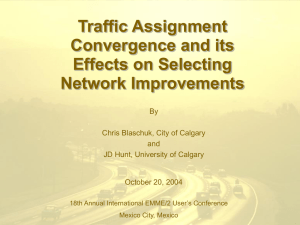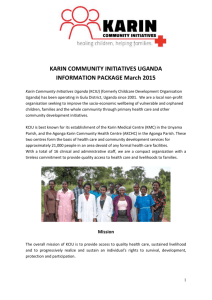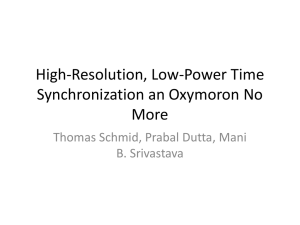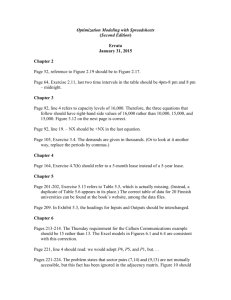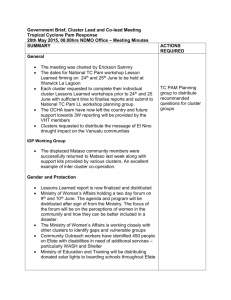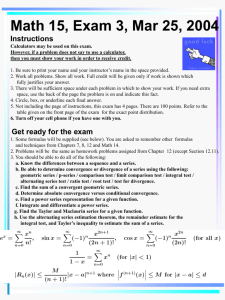Presentation - 15th TRB National Transportation Planning
advertisement
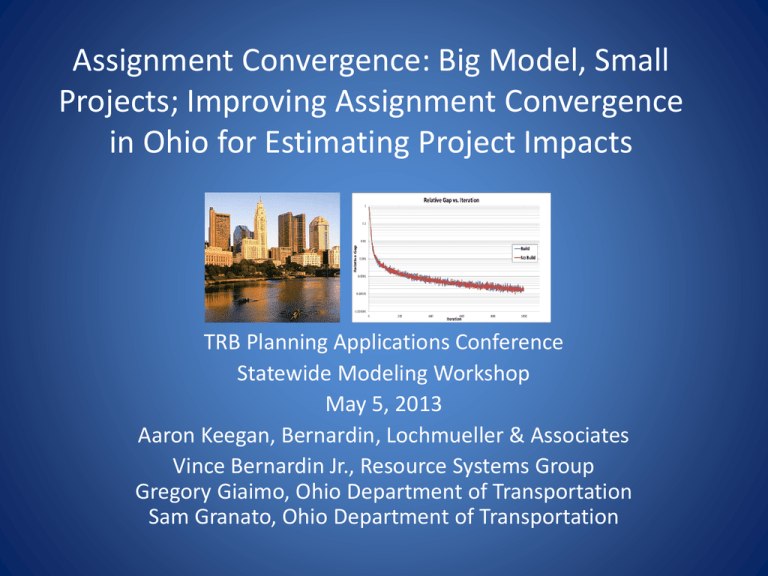
Assignment Convergence: Big Model, Small Projects; Improving Assignment Convergence in Ohio for Estimating Project Impacts TRB Planning Applications Conference Statewide Modeling Workshop May 5, 2013 Aaron Keegan, Bernardin, Lochmueller & Associates Vince Bernardin Jr., Resource Systems Group Gregory Giaimo, Ohio Department of Transportation Sam Granato, Ohio Department of Transportation Motivation • Project Cost/Benefit Analysis For Economic Impact Model – No Build vs. Build Highway Assignments • Highly Converged Assignment Solutions Crucial to Analysis • Minimize Assignment Runtime Ohio Statewide Model = Big Network • 285,000 One Way Links • 5,116 Zones Starting Point • Project impacts are tiny compared to full model, even for large projects thus need very tight convergence • Highway Assignments on Full Statewide Model Network to 500 iterations. • Project Subarea Network Assignments to 500 and occasionally 1000 iterations. • User Equilibrium or MSA Algorithms Statewide Network Example • No-Build & Build MSA Assignments to 500 Iterations • Steady VHT with Respect to Iteration, But Slow to Converge • 80 Hours of Runtime Statewide Network Example Statewide Network Example • Relative Gap Unstable and Poor Predictor of Convergence Statewide Network Example • The VHT Delta Tapers But the Variability is Still About 100 VHT Subarea Network Example • Influence Area Around Project Cut to Subarea • User Equilibrium to 500 Iterations and Occasionally 1000. Subarea Network Example • VHT For Some Projects Would Not Stabilize Subarea Network Example • Relative Gap Highly Unstable Subarea Network Example • Highly Variable Project Delta Initial Adjustments • Switch from Vehicle Time to Weighted Average of Assignment Class Generalized Costs for Convergence Cost Calculation • VDF Function Constraint Removal – Congested Travel Time Had Been Limited to 10 Times Free-Flow Time • See Before and After Assignment Scripts on Your Flash Drive! Subarea with VDF Constraint Removed • Marked Difference in Relative Gap Behavior Subarea with VDF Constraint Removed • VHT Stable, but Suddenly Very High Initial Adjustment Results • Relative Gap Behavior Smoothed by Lifting VDF Constraint, but VHT Went up by Factor of 60. • In One Result 3%, of The Network Links Accounted for 98% of the VHT, Slowing and Destabilizing Convergence. Red=VC>1 Network Editing • Several Iterations of Network Link Edits to Fix Problematic Loading Points & Overloaded Links. VERY HELPFUL! • Edits Were Prioritized by Link VHT • Other Issues Caught in the Process – Link Import Errors From Shapefile – Zero Distance Links Assignment Algorithm • Bi-Conjugate Frank-Wolfe Speeds Arrival to Low Relative Gaps But has “Jumpy” Behavior. Oscillation of Relative Gap Apparent At High Iterations • May Oscillate More With Distributed Processing of Assignment 2010 Base Network • Quick Descent to Low Rel. Gap Then Drift 2010 Base Network • Network Cost and VHT More Stable than Relative Gap, But Still Some Cost Change at High Iterations. 2010 Base Network • Base Network Changed 5 VHT in Final 450 Iterations. • How Significant Is This in Absolute Terms to No Build vs. Build VHT Deltas? 2010 Base Network • VHT Rate of Change Slows But Does Not Stop Small Project Test • AM Assignment Build vs. No-Build Convergence Criteria Choices • High Iteration such as 500 • Relative Gap 1E-4 to 1E-5 • Code A Custom Criteria. Monitor the Absolute Change in Network Generalized Cost For Flattening Once Rel. Gap Below 1E-4 . • Run Time Implications. Small Project Test Results Algorithm Convergence Criteria Build VHT No-Build VHT Build Delta VHT Time Bi-Conj. UE 500ite 3,462,801 3,462,902 -101 58 hours Bi-Conj. UE 1E-5 Relative Gap 3,462,800 3,462,911 -111 5 hours 10 mins Bi-Conj. UE Custom Criteria 3,462,800 3,462,907 -107 5 hours 40 mins Origin Based UE 1E-5 Relative Gap 3,460,431 3,460,510 -79 3 hours 20 mins • See Assignment Graphs on Your Flash Drive! Small Project Test VHT Delta Varies by less than 10 for last 450 ite. Check Solution Localization Summary • VDF Constraint Removal and Edits to Overloaded Links Made the Biggest Improvements to Performance. • Comparable Solutions to High Iteration Assignments achievable in 6 hours vs 80 previously. • Variability of Project VHT Delta has been reduced. Next Steps • New Smoothing Feature for Bi-Conjugate U.E. Released in Software • Beta Testing of New Algorithm Further Assignment Updates • New Generalized Cost Equation with More Explanatory Variables Calibrated with A Genetic Algorithm • New Definition of Classes and Values of Time for Economic Assignment • Optional Toll Choice Logit Model Before Assignment • Interfacing with updated UCOST Tool
